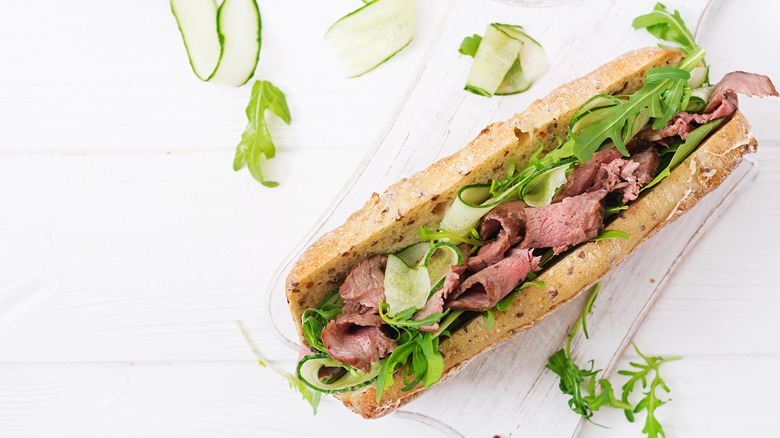What's With The Rainbow Colors On My Lunch Meat?
Ever go to make yourself a deli-style sandwich only to discover your cold cuts have turned iridescent in some spots? While it can be certainly off-putting to see colors like blue and green sparkling on your meat, the U.S. Department of Agriculture (USDA) assures consumers that, generally speaking, that meat is entirely safe to eat. Turns out, the iridescence is a perfectly natural occurrence.
As stated on the USDA website, the rainbow hue you sometimes see is primarily due to the meat's iron and fat content, which reacts with light and sometimes the heat during processing to create the colors. This therefore has nothing to do with any harmful bacteria growth or whether or not it has spoiled. Now, when the meat in question has gone slimy, sticky, or has an unpleasant odor (or all three), then it's time to toss it — those are clear signs of spoilage.
While there's no reason to throw away sandwich meat with a few rainbow spots unless it actually shows other signs of having gone bad, why does this only happen to select slices?
Why do only some meats have rainbow colors?
It's common to see iridescence in meats like roast beef and brisket, but it's highly unlikely you'll ever see the same effect on turkey or chicken. The reason, as Slate explains, has to do with how the meat is cut as well as its natural color. Meats that are sliced against the grain are the ones that can show these colors, given how light interacts with the cut ends of the meat fibers.
This is particularly easy to see on dark meat but doesn't show up quite as well on lighter meats like many cuts of poultry. That's due to the way white light is diffracted. The colors are also more or less pronounced depending on the smoothness of the cut. Because light diffraction occurs more easily on smooth surfaces, if the meat is cut with a rougher serrated edge, it's unlikely that any rainbow colors will appear. With or without the rainbow color, however, the meat should taste exactly the same.

